Emo Philips boasts one of the most distinctive voices in comedy and has for the better part of three decades.
His 1985 record, “E=MO2,” remains the gold standard for joke-writers of his generation and those who have followed him into stand-up comedy. Last weekend, Philips performed in two shows at the Bridgetown Comedy Festival in Portland, Ore. But first, he had to take care of that voice. So he bought a new opera singer’s atomizer.
“My throat is my Achilles heel,” Philips told The Comic’s Comic over the phone from his home in California. “I try not to talk during the day when I have a show that night. My voice is my instrument, just like a saxophonist’s instrument is his saxophone, plus also his voice, if he’s the one between tunes that makes announcements.”
Have you used atomizers throughout your career? “Before, I’d take throat drops. Or else do mime on stage if it got particularly bad. But this works better,” he said.
How long did it take to find your voice onstage – both in the most literal sense, but also in terms of carving out your unique sensibility and point of view?
“When people remark upon my voice,” Philips said. “I think they’re really remarking upon my enunciation. Part of this I attribute to my coming of comedic age in a pre-VCR (let alone pre-DVR) era, where if a TV viewer didn’t catch what a performer said, he’d have to wait 26 weeks for a re-run to get a second chance. But mainly I attribute my excellent enunciation to the panoply of speech impediments that plagued me as a child. Once a week a speech therapist came to our school. I’d go to a special room first thing in the morning, with all the other kids who, say, had trouble with “r” sounds. Then after half an hour all those kids would leave, and I’d stick around for the next group of kids, who were having difficulty with the “th” sounds (in retrospect, I think they were all from France). And so it would continue, throughout the day, the other kids always changing, and me always staying. I mispronounced every conceivable sound in the English language, as well as several in the African click tongues. Plus also… Well, I’m babbling now. But at least I’m babbling with clarity.”
You sound just fine by me, and millions of other fans, too.
How about as far as your comedic voice, though?
“My comedic voice? Ah! That’s something that every comedian spends his or her entire lifetime perfecting. When I was starting out, way back in the seventies in Chicago, the comedian Paul Kelly told me, ‘The more shows you do, the nicer the audiences get.’ My first year, I was lucky enough to perform 500 shows, and I performed another 500 my second year. There’s a wonderful Groundhog’s Day element to stand-up: the audiences enjoying you have no idea of the great suffering endured by the audiences before.”
“Sean, it’s a continual process. I never now feel that I have it nailed. It’s a burgeoning – I don’t think burgeoning is the right word. I’m always adapting. Always changing. Always trying to get better.”
Take his first appearance on Late Night with David Letterman, in 1984. “I started in 1976,” he said. “My first time on Letterman, I’d already been doing stand-up for eight years. So I was not anyone’s definition of overnight success. Unless you live in Alaska.”
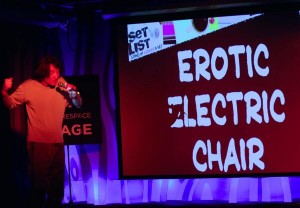
I’ve seen you perform in clubs and theaters on the road before. But how often do you appear with other comedians as part of a festival setting, like you did at Bridgetown?
“I play festivals once or twice a year. I love playing festivals. May 31, I’m at the Limestone Festival in Bloomington, Indiana. And, of course, I’ve done the Montreal (Just for Laughs) Festival and the Edinburgh (Fringe) Festival many times.”
Here is a brief clip from a TV appearance he made during Edinburgh Fringe in 2010:
When he’s not in a festival or on the road, Philips is at home in Southern California, where he’s still likely to see plenty of comedians.
“I hang out in a place in Hollywood called ioWest. Every Sunday if I’m in town I go there to see a show called Top Story! Weekly.”
What would you consider your home club, in terms of performing?
“The closest thing I have to a home club is the Steve Allen Theater. I perform in the odd show there every now and then. Plus I’ll often co-host The Tomorrow Show with Ron Lynch. Whenever I do, I’ll set up a little band. For St. Patrick’s Day, we played a bunch of Irish songs. For our holiday show, we played a lot of French songs, because I picked Bastille Day. I thought you could choose any holiday! Our next one will be Flag Day, which goes right into Father’s Day at midnight.”
What do young comedians need to know about starting out?
“Young comics should ask themselves: What kind of audience do I want to be popular in front of? And then they should focus their efforts on that kind of audience. If Philip Glass worked state fairs every now & then, you’d eventually hear some boogie-woogie cropping up in his repertoire.”
What more can you tell me about what it was like for you, starting out in the 1970s?
“There were two comedy clubs in the Chicago area: the Comedy Womb (“Where comedians are born”) and the Comedy Cottage. Back then, comedy clubs had not yet embraced the MC/ feature/ headliner paradigm. The show would start at 9 p.m. and end sometime after 1 a.m., and each comedian would do between 5-15 minutes, and the audience members would show up and leave whenever they pleased. When I started, I’d be the first act at one club, performing for half a dozen people, and then I would drive half an hour to the other club and end the show there, going up for half a dozen people. But it was a fertile environment, for no matter how few people were in the audience, we comedians always watched each other, creating an impetus, if not a necessity, to come up something new for every show. On top of that, I know of no greater spark to creative experimentation than the feeling that you’re being taken advantage of financially. For the first year I worked for free; then I got $2.50 a show. A year later I went on strike after learning that some comics were getting $5 a show. But after a month I buckled, and came back to the fold; I’ve no idea, in the afterlife, how I’ll be able to look Samuel Gompers in the eye.”
Philips marvels at the thought that he started just when stand-up comedy started to find a foothold across America. “I talk to young comics who say, ‘Tell me all about the ‘80s, Emo!’ As if I were a jazz player in New York City in the 1940s, or a surrealist painter in Paris in the ‘20s. I realize now that I was lucky enough to ply my craft during one of the most astounding decades in comedy history. Although I don’t think anyone knew it would be at the time.
In an astounding decade for comedy history, Philips stood slightly askew, arms splayed up and over his head, as one of the most astounding and outstanding stand-ups of all.
Philips will be performing May 18 as the guest performer for ioWest’s Top Story! Weekly, and at the end of May at the Limestone Comedy Festival in Bloomington, Ind. Check EmoPhilips.com for other upcoming shows.
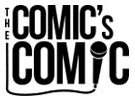
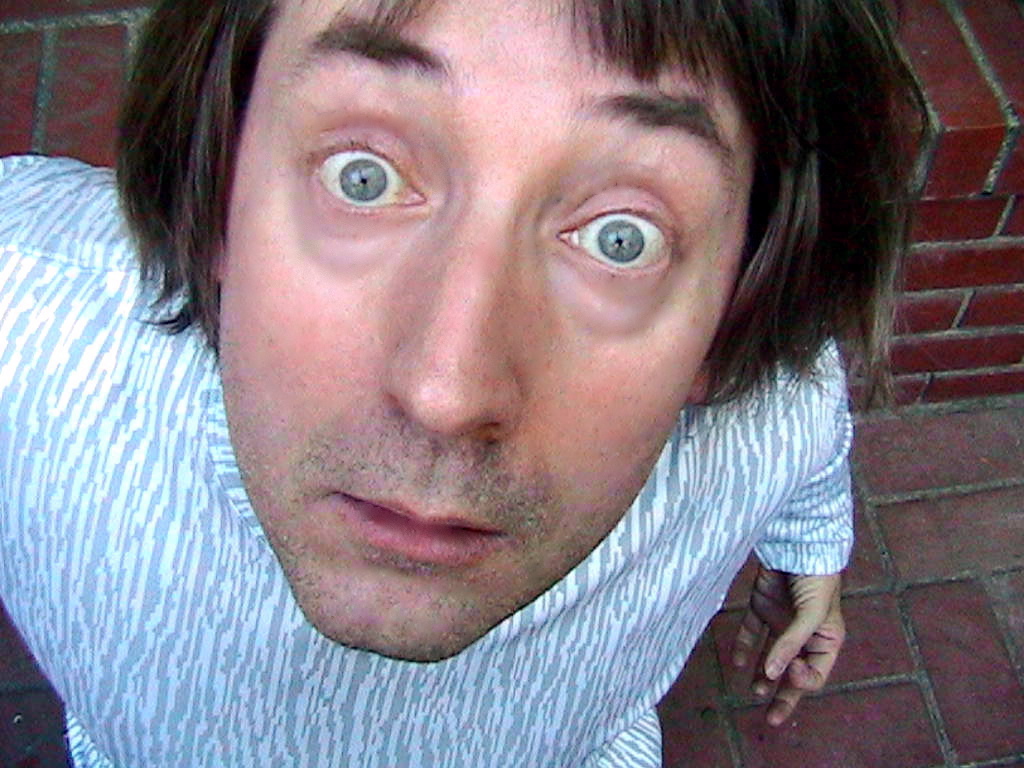
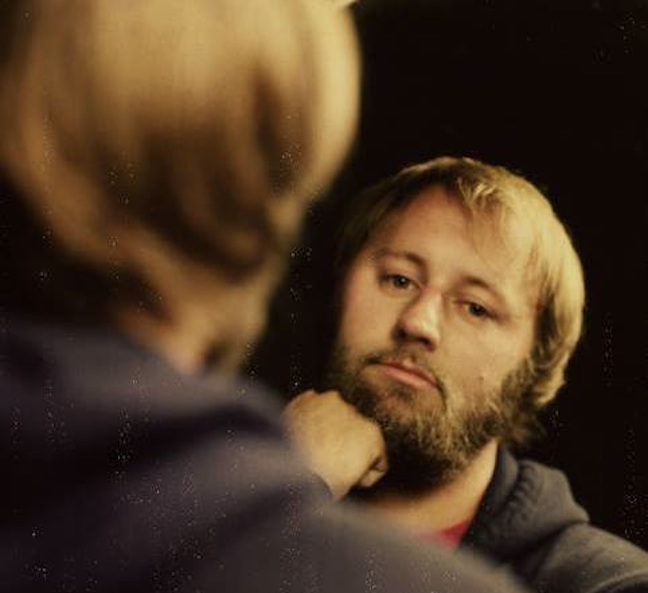
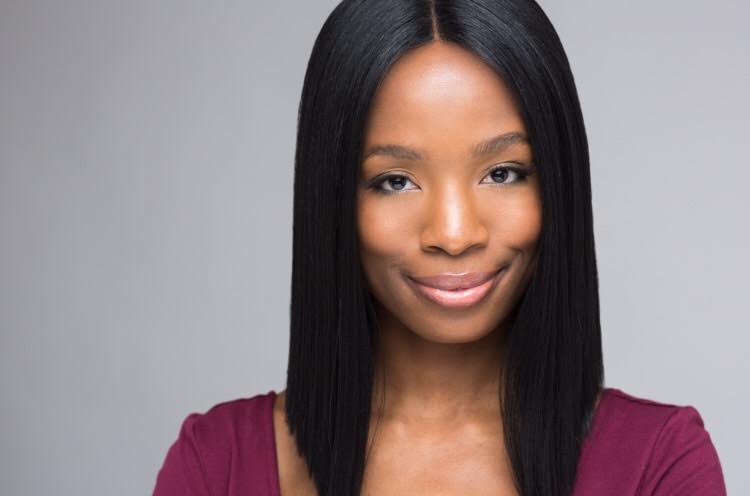
One thought on “The Emo Philips interview”
Comments are closed.